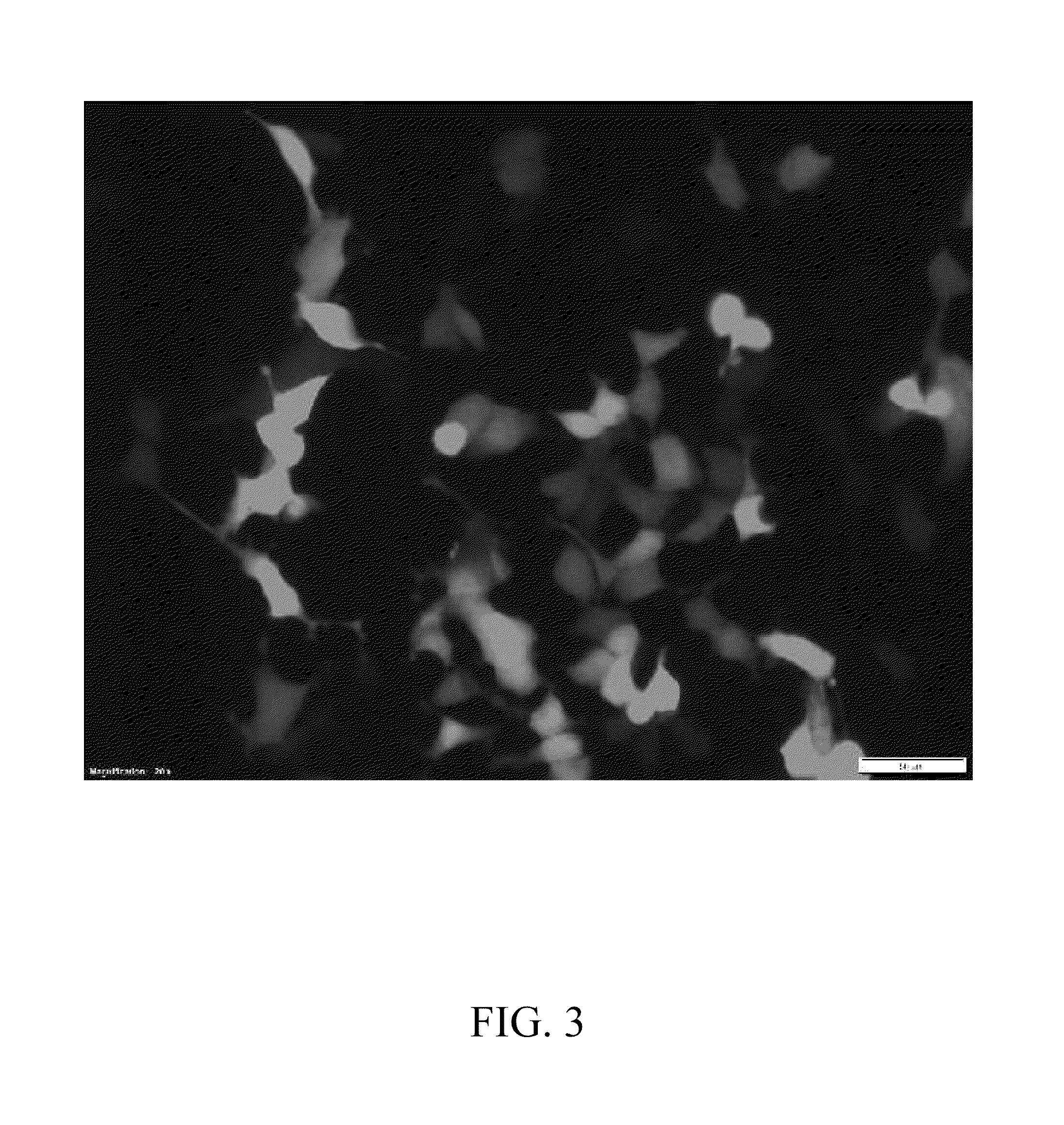Chimeric vsv-g proteins as nucleic acid transfer vehicles
a nucleic acid transfer vehicle and chimeric technology, applied in the field of chimeric or fusion protein, can solve the problems of preventing the synthesis of vsv, and obscuring the reason behind the pantropism of vsv for a long time,
- Summary
- Abstract
- Description
- Claims
- Application Information
AI Technical Summary
Benefits of technology
Problems solved by technology
Method used
Image
Examples
example
[0060]The following example utilizes a VSV-G-H2A chimeric protein constructed from a human histone H2A protein tagged with VSV-G at the N-terminus. The VSV-G-H2A chimeric gene was synthesized using the propriety technology from Integrated DNA Technologies, Skokie, Ill. The VSV-G-H2A gene was cloned in the mammalian expression vector pTT5 at EcoRI and NotI restriction enzyme sites. The plasmid was prepared and sequenced for confirmation.
[0061]HEK293T cells were passed to ˜70% confluency a day prior to transfection (3×T75 flasks, ˜7.5×106 cells / flask). The following day, the cells in T75 flasks were transfected using Lipofectamine® 2000 (Life Technologies Corp., Carlsbad, Calif.) (per T75 flask: 3:1 ratio; 20 ug DNA; and 60μL Lipofectamine® 2000). Flasks were incubated at 37° C. and 5% CO2 overnight. 24 hours after transfection, the conditioned media was removed and replaced with fresh media (14 mL / flask). Cells were further incubated overnight. Conditioned media was harvested and rep...
PUM
| Property | Measurement | Unit |
|---|---|---|
| total volume | aaaaa | aaaaa |
| total volume | aaaaa | aaaaa |
| nucleic acid binding | aaaaa | aaaaa |
Abstract
Description
Claims
Application Information
 Login to View More
Login to View More - R&D
- Intellectual Property
- Life Sciences
- Materials
- Tech Scout
- Unparalleled Data Quality
- Higher Quality Content
- 60% Fewer Hallucinations
Browse by: Latest US Patents, China's latest patents, Technical Efficacy Thesaurus, Application Domain, Technology Topic, Popular Technical Reports.
© 2025 PatSnap. All rights reserved.Legal|Privacy policy|Modern Slavery Act Transparency Statement|Sitemap|About US| Contact US: help@patsnap.com



